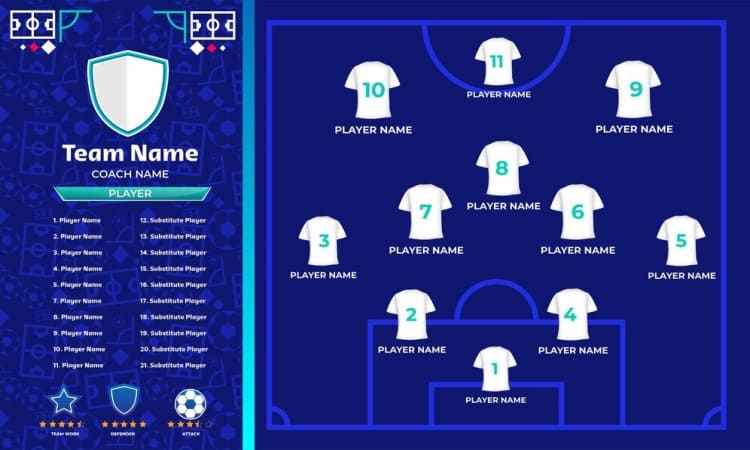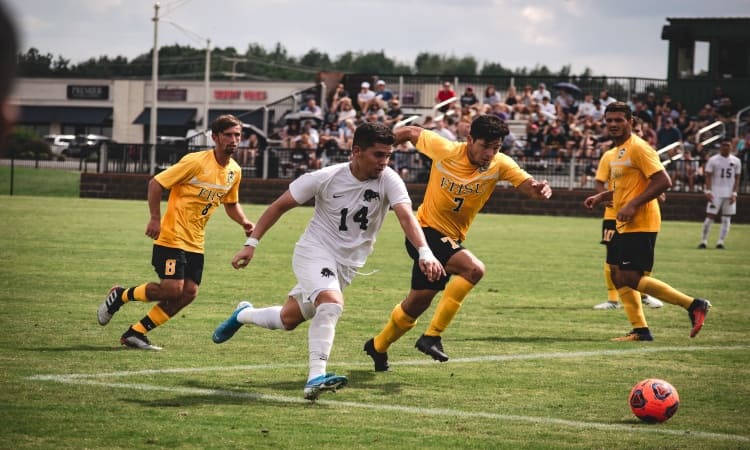What do all the numbers 10, 8, 11, and others mean regarding soccer? There is so much excitement surrounding the sport that you can’t help but fall out and feel confused at times, hence not blending in with the rhythm of soccer pop and dance exhibited by other soccer fans. Whether local town soccer matches to the top world leagues such as the Premier League, La Liga, and Bundesliga, to name but a few, or the top of it all, the World Cup, you will have to learn about soccer matches, history, and positions in soccer.
After getting the correct information, you will follow and enjoy the world’s most famous sport! This blog will center on soccer positions, player dynamics during matches, and notable players in different positions. In my personal experience, if there is one thing in sports that I really struggled to master, it was the soccer positioning of players and player roles.
If I managed to get and master the facts behind it, then you are not an exemption. If this interests you, you’ve come to the right place. Sit back and read on!
What Are the Soccer Positions?
Soccer, like many other team sports, requires player coordination and formations when they are on the field. To ensure the effectiveness of the players, the coach and team managers set up formations. This is key when it comes to winning a match. There are four main soccer position groups, which are then divided into 11 specific positions. Below, we will highlight the four main soccer position groups.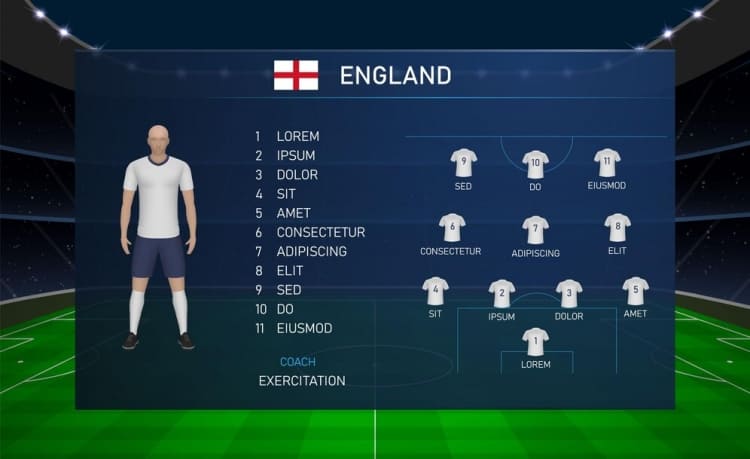
4 Main Soccer Position Groups
Soccer positions are highly specialized, and you will find out about these four main position groups today. These groups are broken down into eleven specific soccer positions and enhanced formations. They include:
- Goalkeepers
- Defenders
- Midfielders
- Forwards
Each of the members of these groups has a designated position and essential duties assigned to it.
Functions of the 4 Main Soccer Position Groups
In this section, I will take you through the functions of each of the four main soccer position groups and their relevance in soccer. Let’s get into each one, then.
- Goalkeepers: Only one goalkeeper plays per team in a soccer match. This player can use their hands to catch because they act as the last line of defense against a goal attempt. The hand usage restriction is within an 18-yard box.
- Defenders: Preventing the opposition from scoring goals is what these players are all about. They work in tandem with their goalie to avoid balls going into the net.
- Midfielders: We can call them the soccer cocktails. It calls out to perform a touch of every role, from defense to attack. They can work to defend their team or attack.
- Forwards: These soccer players are positioned further from their team’s goal. Their primary responsibility is breaching the opposition’s defense and scoring goals.
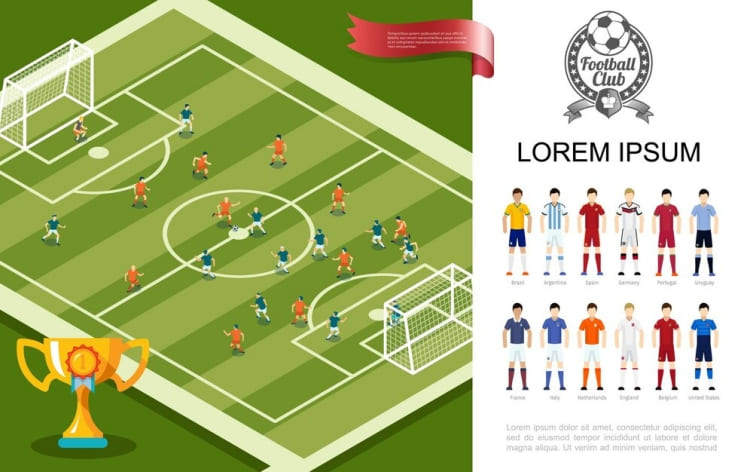
The 11 Crucial Soccer Positions
How many players are there on the soccer team? 11. Unless there is a particular case due to penalties granted by a referee during a match, this number may sometimes be less than 11. A good soccer team requires players to perform their tasks on the team in efficient ways to minimize substitution. Historically, soccer positions have often had an associated number with them.
Here are the numbers you will get accustomed to hearing when it comes to soccer:
- No. 1: Goalkeeper (GK)
- No. 2: Right Fullback (RB)
- No. 3: Left Fullback (LB)
- No. 4: Center Back (CB)
- No. 5: Center Back (CB)
- No. 6: Center Defensive Midfielder (CDM)
- No. 7: Right Winger (RW)
- No. 8: Center Midfielder (CM)
- No. 9: Striker (S)
- No. 10: Center Attacking Midfielder (CAM)
- No. 11: Left Winger (LW)
Understanding the Role of Each Soccer Position
Each player on the field has a paramount role in their team during a game. Let’s examine these soccer positions closely to better comprehend their importance. 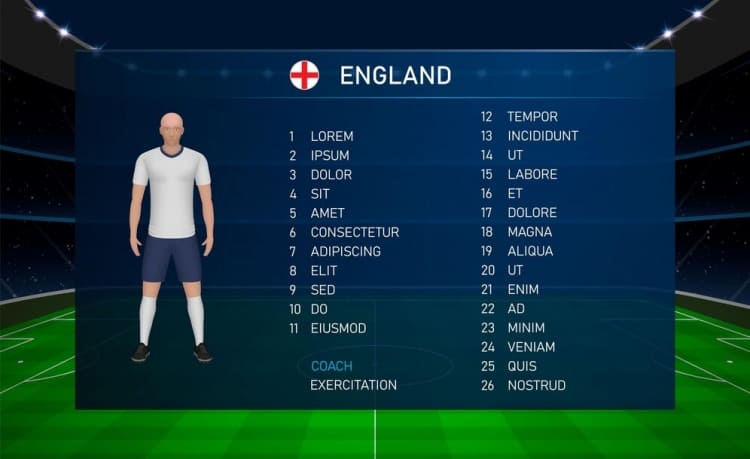
#1) Goalkeeper (No. 1)
Our discussion today will kick off with the goalkeeper. This player is also called a “goalie” or “keeper.” They hold a key position in soccer by ensuring the ball does not pass between the goalposts. This area is the final line of defense against enemy attacks. A goalkeeper needs to possess a series of required skills to not let the ball through the goal, such as:
- Perfect ball-catching techniques
- Excellent communication and coordination skills with other players
- Quick reflexes and agility
- Proper body fitness and physics
- Powerful kicking abilities
Soccer goalkeepers can use their hands on the field only within the 18-yard box. Violations of this rule include leaving the designated area or receiving a back pass from a teammate. In either case, before using their hands again, they must tap it with one foot per regulation.
Among the top-rated professional goalkeepers in the sport are:
- David De Gea
- Nadine Angerer
- Manuel Neuer
- Alisson Becker
- Iker Casillas
#2) Right Fullback (No. 2) and Left Fullback (No. 3)
The right and left fullbacks are the rear defenders in soccer. When needed, they hover closer to the middle of the field, but otherwise, they play near the edges of the field. A fullback’s position in soccer has to be able to play one-on-one, make tackles, and complete technical passes.
All fullbacks need to have a high rate of speed and field awareness to maintain formation with the offensive line. A superior fullback will locate a midfielder with space in front of them to initiate a counterattack on behalf of their side when needed. With a few pivotal plays, they may change the team’s strategy from defensive to attacking.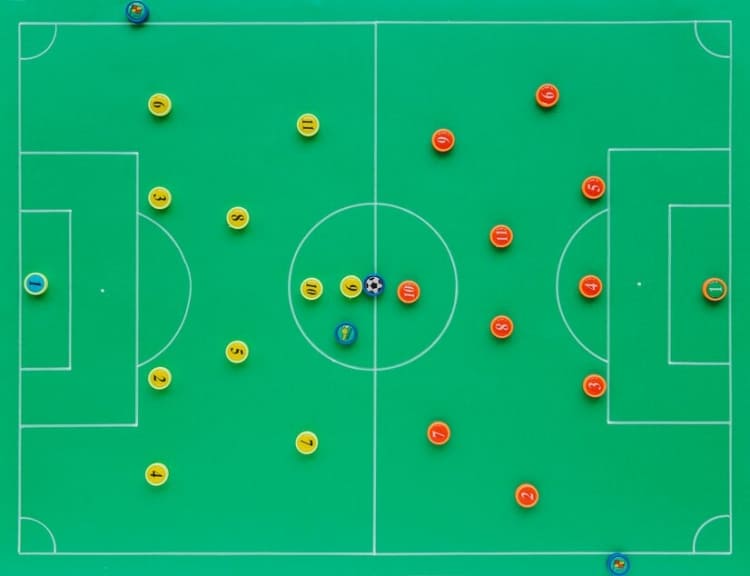
Here are a few of the top soccer fullbacks in the professional ranks:
- Alphonso Davies
- Alejandro Grimaldo
- Achraf Hakimi
- Trent Alexander-Arnold
- Sergi Cardona
#3) Center Backs (No. 4) and (No. 5)
The position of the center back comes next, where they get positioned at the back of the defense line near the middle of the field. “Stopper” is another term for a center-back defender.
In general, a center-back role is the same as a fullback, where they ensure that the offensive players do not reach their end of the field. Sometimes, two center-backs may play together in a 4-4-2 formation.
A center-back needs adequate skills in communication, leadership, and emotional stability. These abilities and mental and physical tenacity will distinguish a tremendous professional from a mediocre one.
In the modern soccer game, the elite center backs include:
- Van Dijk Virgil
- Ruben Dias
- Ronald Araujo
- William Saliba
- Alessandro Bastoni
#4) Center Defensive Midfielder (No. 6)
This is also referred to as the “holding midfielder” position. The player gets positioned midfield between the offensive players and the defense line. It allows anticipation of passes and passes to the center backs. The perfect player for this soccer position is someone who can manage the ball gently, make rapid judgments, and be defensive-minded.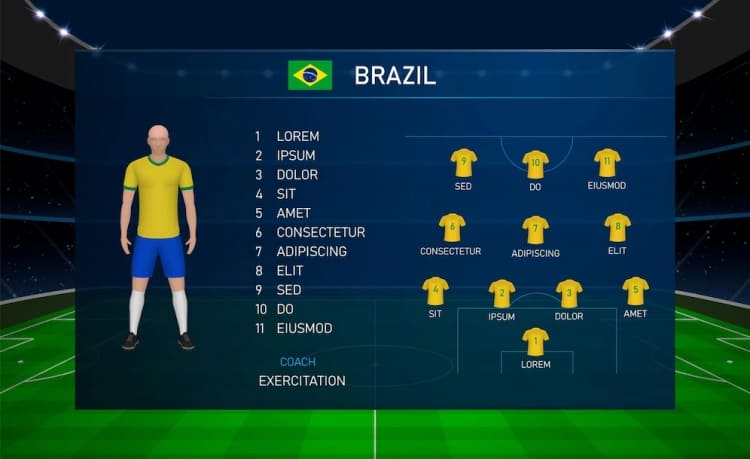
Among the top central defensive midfielders in the soccer world are:
- N’Golo Kante
- Joshua Kimmich
- Sandro Tonali
- Thomas Partey
- Pierre-Emile Hojbjerg
#5) Right and Left Wingers (No. 7 and No. 11)
The left and right midfielders, also known as wingers, are usually the players’ soccer positions on the two sides of the field, also referred to as the flanks. In soccer, the primary role of the winger is to take on defenders and get crosses into the box to provide the team with breadth and offensive options.
Wingers are crucial players for both defense and offense. Excellent endurance, one-on-one skills, and passing ability are necessary for the role. In more contemporary formations, inverted wingers work in addition to conventional wingers.
In this situation, a player lines up on the side opposite to their muscular foot. For instance, a lefty inverted winger might line up on the right side to cut in with their dominant foot and provide his team with additional scoring possibilities.
The following are a few of the best wingers in modern soccer:
- Mohamed Salah
- Neymar
- Ousmane Dembele
- Serge Gnabry
- Sadio Mane
#6) Center Attacking Midfielder (No. 10)
The playmaker on the squad is usually a center-attacking midfielder (CAM). A cross between a midfielder and a striker, the CAM position is often used in certain instances to score goals on its own or to position teammates.
Technical and tactical awareness, agility, inventiveness, and innate willpower are the main competencies needed. The success or failure of a soccer match may depend on the caliber of this position. The center offensive midfielder is responsible for passing, scoring, and providing defensive cover when needed.
The top players in CAM positions in soccer are:
- Messi Lionel
- Bernardo Silva
- Piotr Zielinski
- Nkunku Christopher
- Fernandes Bruno
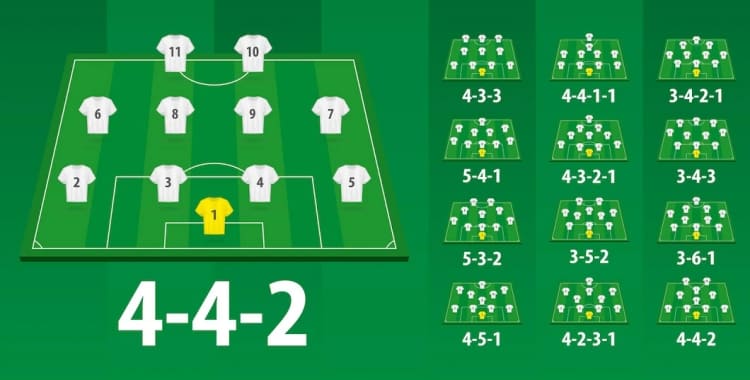
#7) Center Midfielder (No. 8)
The center midfielder (CM) contributes offensively and defensively to the team’s success, a rare role indeed. They need to possess extraordinary levels of stamina while playing. Because the center midfielder gets the ball to the correct player at the right time, their soccer positioning role usually requires precise vision.
This soccer position may affect the style of play; however, this is not always the case. Soccer abilities, including ball control, tackling, passing, work rate, and leadership, are necessary to succeed in this role. It is one of the most crucial roles in the field.
Some of the top center attacking midfielders are these players:
- Pedri Frenkie de Jong
- Gavi
- Luka Modric
- Martin Odegaard
- Kevin De Bruyne
#8) Striker (No. 9)
As their name suggests, strikers are the soccer players positioned in the forward spots, closest to the opposition’s goal. Their objective is simple: shaking the goal’s net!
Strikers’ primary responsibility is to score goals and assist teammates in scoring. They can also apply pressure to the goalkeeper and defenders on the other side. To wear out defenders, the striker has to combine fast feet, prowess in ball handling, and a powerful physique to allow unstoppable shots. In one-on-one scenarios, strikers will often need to hold onto the ball. They must be able to judge when to maintain possession, when to lay it off, and when to take on a defender.
Soccer’s best strikers include:
- Ronaldo Cristiano
- Karim Benzema
- Lewandowski Robert
- Erling Haaland
- Mbappe Kylian
Wrap Up
Some positions we have covered, such as strikers, are more popular than others. However, a soccer match requires every player to contribute towards the team’s victory. The team’s success hinges on good physical fitness, mental stability, and exceptional interpersonal abilities between the players fulfilling these positions.
These qualities make soccer one of the most loved sports in the world. Therefore, it is essential to be conversant with some of these positions to remain included during a soccer match or discussion. Don’t hesitate to refer to this article if you get confused or forget something. Have fun!

